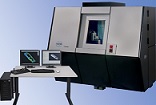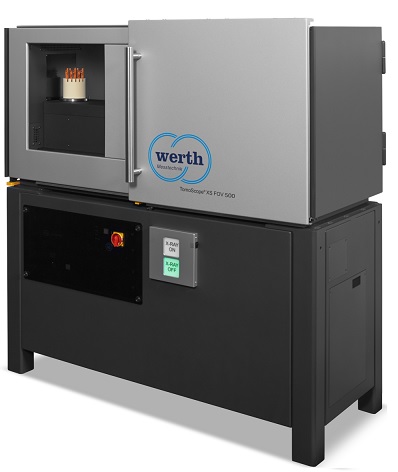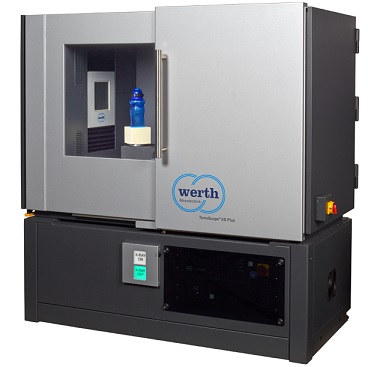Region of Interest (ROI) tomography was developed to create high-resolution images of some regions of larger work pieces. In the past, the entire work pieces always had to be fully scanned at high resolution. ROI-CT only measures the relevant area at high magnification. To accomplish this, the entire work piece is first captured at low resolution and the desired partial region (ROI) is captured at an appropriately high resolution. This can improve measurement time and reduce the resulting file size.
With conventional ROI tomography, ROI zones needed to be in the exact center of the rotary axis, greatly limiting both the flexibility and number of possible regions of interest. The new, function of Eccentric computed tomography (CT) now makes it possible to place the work piece arbitrarily on the rotary table. This eliminates the laborious and time-consuming alignment of the workpiece, making measurements more convenient and efficient. The WinWerth® software automatically calculates a virtual axis of rotation at the center point defined by the operator within the measured volume. During the measurement, rotation about the virtual axis of rotation is ensured by moving the precise machine axes.
The Multi-ROI-CT option combines the advantages of Eccentric and ROI tomography. The high-resolution regions of the work piece can be located at any arbitrary position within the measured object. Several ROI zones can even be captured and linked together. The overall volume and the ROI volume are located within the same coordinate system. This means that an overall point cloud for the work piece can be computed automatically with different structural resolutions. During analysis, features from the overview volume and the various ROI measurements can be linked to each other. This unique combination of Eccentric CT and ROI CT makes computed tomography an economically feasible solution for an even greater range of applications.












